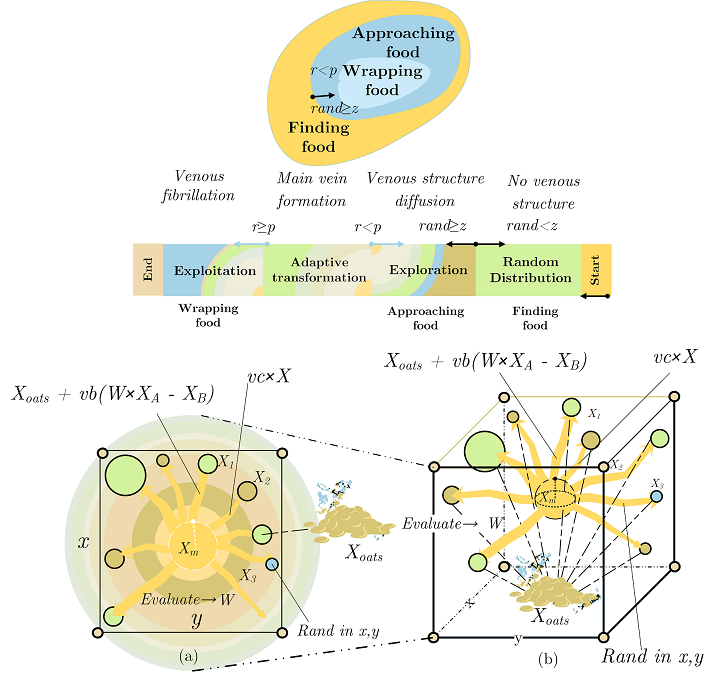
Slime mould algorithm: A new method for stochastic optimization
Shimin Li, Huiling Chen, Mingjing Wang, Ali Asghar Heidari, Seyedali Mirjalili
Future Generation Computer Systems, Elsevier
DOI, 2020

Shimin Li, Huiling Chen, Mingjing Wang, Ali Asghar Heidari, Seyedali Mirjalili
Future Generation Computer Systems, Elsevier
DOI, 2020
Slime mould algorithm (SMA) is a powerful population-based optimizer based on the oscillation mode of slime mould in nature. In April 2020, the research of SMA was published in the prestigious journal of Future Generation Computer Systems (FGCS).
Without having any brain or neurons, slime moulds, Physarum polycephalum, are extraordinarily intelligent, capable of solving difficult computational problems with extreme efficiency. This single-celled amoeba can remember, make decisions and anticipate change, influencing us to rethink intelligent behaviour. It optimizes the shape of its network over time as it takes in information.
The SMA has a unique mathematical model and very competitive results along with fast convergence for many problems, especially for real-world cases. The gradient-free SMA method simulates positive and negative feedbacks of the propagation wave of slime mould. It has a dynamic structure with a stable balance between global and local search drifts. Until now, many researchers have applied this method to several real-world problems, and their work is published in leading international journals.

Without having any brain or neurons, slime moulds, Physarum polycephalum, are extraordinarily intelligent, capable of solving difficult computational problems with extreme efficiency.
Because of the unique pattern and distinctive, intelligent abilities of slime mould, they can utilize multiple food sources at the same time to construct a venous network for connecting the sources. If there is enough food in the surroundings of the slime, it can even develop and distribute itself to more than 900 square centimetres. Research has confirmed and utilized the slime mould for solving complex mazes, demonstrating that the slime mould is able to detect and develop the optimal path to connect the food in a fairly optimal manner using a combination of positive and negative feedbacks (a sending and signalling way). It is fascinating that the slime mould can dynamically regulate their search patterns according to the quality of food provenance. The venous construction of slime mould produces along with the phase difference of the contraction mode, so there are three correlations between the morphological variations of the venous structure and the contraction mode of slime mould:
As a result, the relationship between venous structure and contraction design of slime mould is in line with the shape of naturally designed cells. The thickness of each vein is obtained by the flow feedback of the cytoplasm in the Physarum solver. The rise in the flow of cytoplasm leads to an upsurge in the diameter of veins. As the flow decreases, the veins contract because of the decrease of the diameter. Slime mould can shape a stronger path where food concentration is higher, therefore, ensuring that they get the maximum concentration of nutrients.
The following remarks can theoretically help us to understand why the developed SMA can be useful in exploring or exploiting the feature space of a given optimization problem:
We are excited to share the Slime Mould Algorithm (SMA) and invite you to explore its resources and research results.
Slime mould algorithm (SMA): A new method for stochastic optimization, Shimin Li, Huiling Chen, Mingjing Wang, Ali Asghar Heidari, Seyedali Mirjalili, Future Generation Computer Systems, 2020 DOI